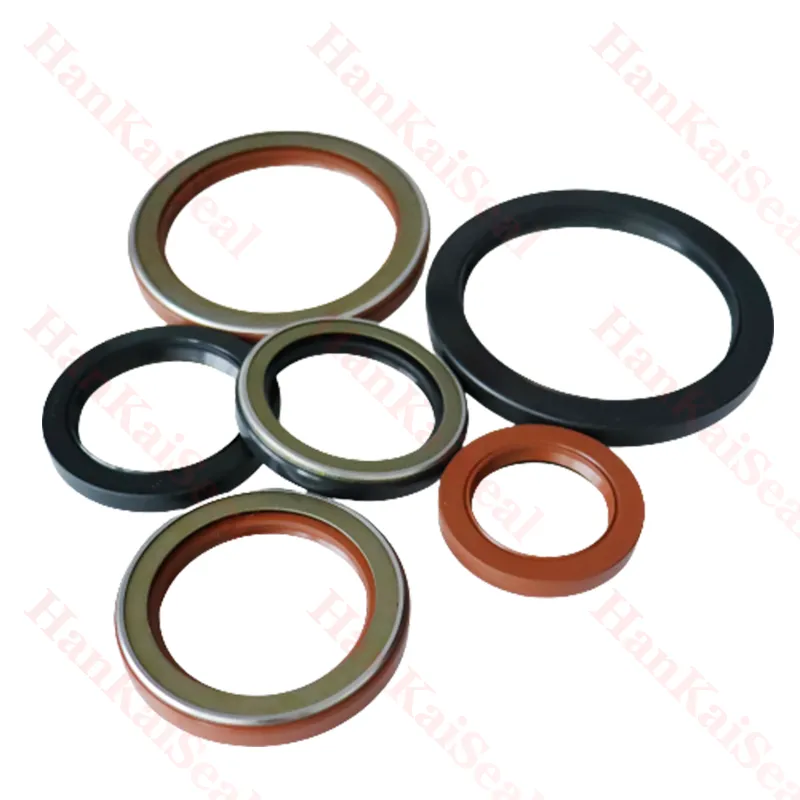დეკ . 06, 2024 10:02 Back to list
Hydraulic Cylinder Wiper Seals for Enhanced Performance and Longevity
Understanding Wiper Seals in Hydraulic Cylinders
Hydraulic cylinders are vital components in various machinery and equipment, providing the necessary power for lifting, pushing, and pulling operations. Among the multifaceted elements that ensure the performance and longevity of hydraulic cylinders, the wiper seal plays a crucial role. This article delves into the importance of wiper seals in hydraulic cylinders, their construction, functionality, and maintenance considerations.
What is a Wiper Seal?
A wiper seal, also known as a dirt scraper or dust seal, is an essential element located at the external end of a hydraulic cylinder. Its primary function is to prevent contaminants, dirt, and moisture from entering the cylinder, which could lead to premature wear or damage of the internal seals and components. The wiper seal is designed to withstand harsh environmental conditions while providing a reliable barrier against external elements.
Importance of Wiper Seals
1. Contamination Prevention One of the most critical roles of a wiper seal is to keep contaminants away from the hydraulic fluid and the internal components of the cylinder. Even minute particles can significantly affect the performance of hydraulic systems, leading to increased friction, reduced efficiency, and ultimately, failure.
2. Extended Equipment Life By preventing dirt and moisture ingress, wiper seals contribute to the longevity of hydraulic cylinders and the machinery they are a part of. This not only saves on maintenance costs but also minimizes downtime caused by unexpected repairs.
3. Operational Efficiency Hydraulic systems that operate without contamination typically enjoy smoother performance and better efficiency. Wiper seals help maintain optimal hydraulic pressure and fluid flow, directly impacting the effectiveness of the machinery.
Construction of Wiper Seals
Wiper seals are typically made from various elastomers, including polyurethane, nitrile rubber, or silicone, depending on the specific application and environmental conditions. The design can vary widely, featuring different shapes and profiles, including lip seals, double-lip seals, and more complex geometries.
wiper seal hydraulic cylinder

The lips of the wiper seal are crucial to its effectiveness. They are engineered to create a tight fit with the piston rod while being flexible enough to accommodate any minor misalignments or movements. Some wiper seals are designed to provide a cleaning action as the rod retracts, removing any debris before it can penetrate further into the cylinder.
Maintenance Considerations
To ensure the longevity and effectiveness of wiper seals, regular maintenance and inspection are essential. Here are some recommendations
1. Routine Inspections Regularly inspect the wiper seals for any signs of wear, cracking, or disfigurement. Replacing wiper seals at the first sign of damage can prevent more severe issues down the line.
2. Clean the Cylinder Area Always keep the area around the hydraulic cylinder clean. This can prevent contaminants from inadvertently being pushed into the seal during operation.
3. Check Hydraulic Fluid Levels Maintaining proper hydraulic fluid levels and ensuring the fluid is clean can alleviate pressure on the wiper seals, enhancing their performance.
4. Use Appropriate Seal Materials When replacing wiper seals, ensure that the materials chosen are suitable for the working environment, including temperature, pressure, and the presence of chemicals.
Conclusion
Wiper seals are often overlooked yet are critical to the operation of hydraulic cylinders. They serve an essential purpose in contamination prevention, extending equipment life, and ensuring operational efficiency. By understanding the function, construction, and maintenance needs of wiper seals, operators can take proactive steps to enhance the performance of hydraulic systems and reduce overall maintenance costs. Regular inspections and timely replacements will not only safeguard the machinery but will also ensure that it operates at its peak potential.
-
Unlocking the Potential of Hydraulic Systems with Essential Sealing Solutions
NewsAug.06,2025
-
Unleash the Power of Your Hydraulic Systems with Our Premium Seal Kits
NewsAug.06,2025
-
Specialized Hydraulic Seal Kits for Breakers, Pistons, and Presses
NewsAug.06,2025
-
Revitalize Hydraulic Systems with Premium Repair and Seal Kits
NewsAug.06,2025
-
Fortify Your Cylinders with Premium Sealing Solutions
NewsAug.06,2025
-
Elevate Hydraulic System Reliability with Specialized Seal Kits
NewsAug.06,2025
-
TCN Oil Seal Metal Ring Reinforcement for Heavy Machinery
NewsJul.25,2025
Products categories
















